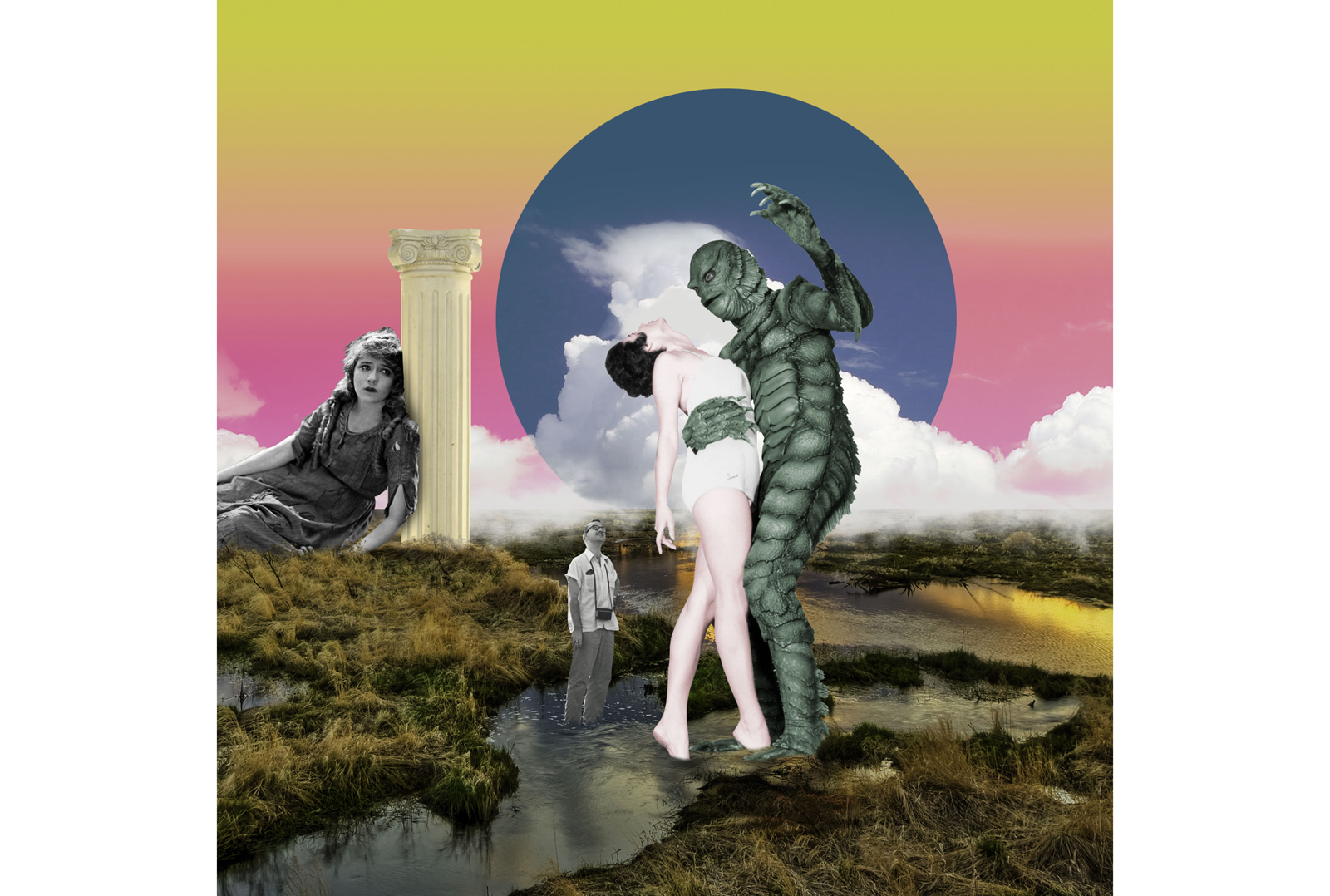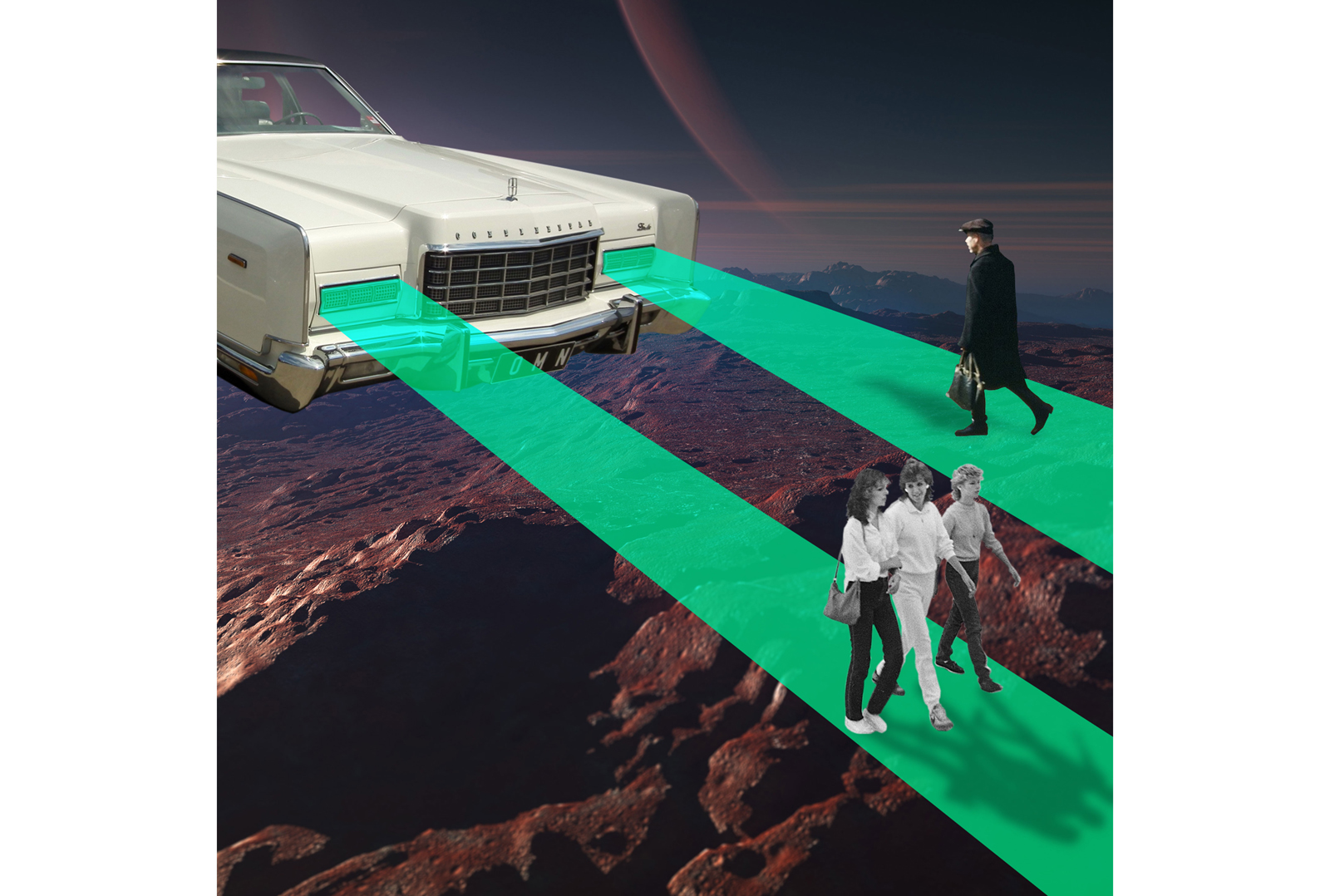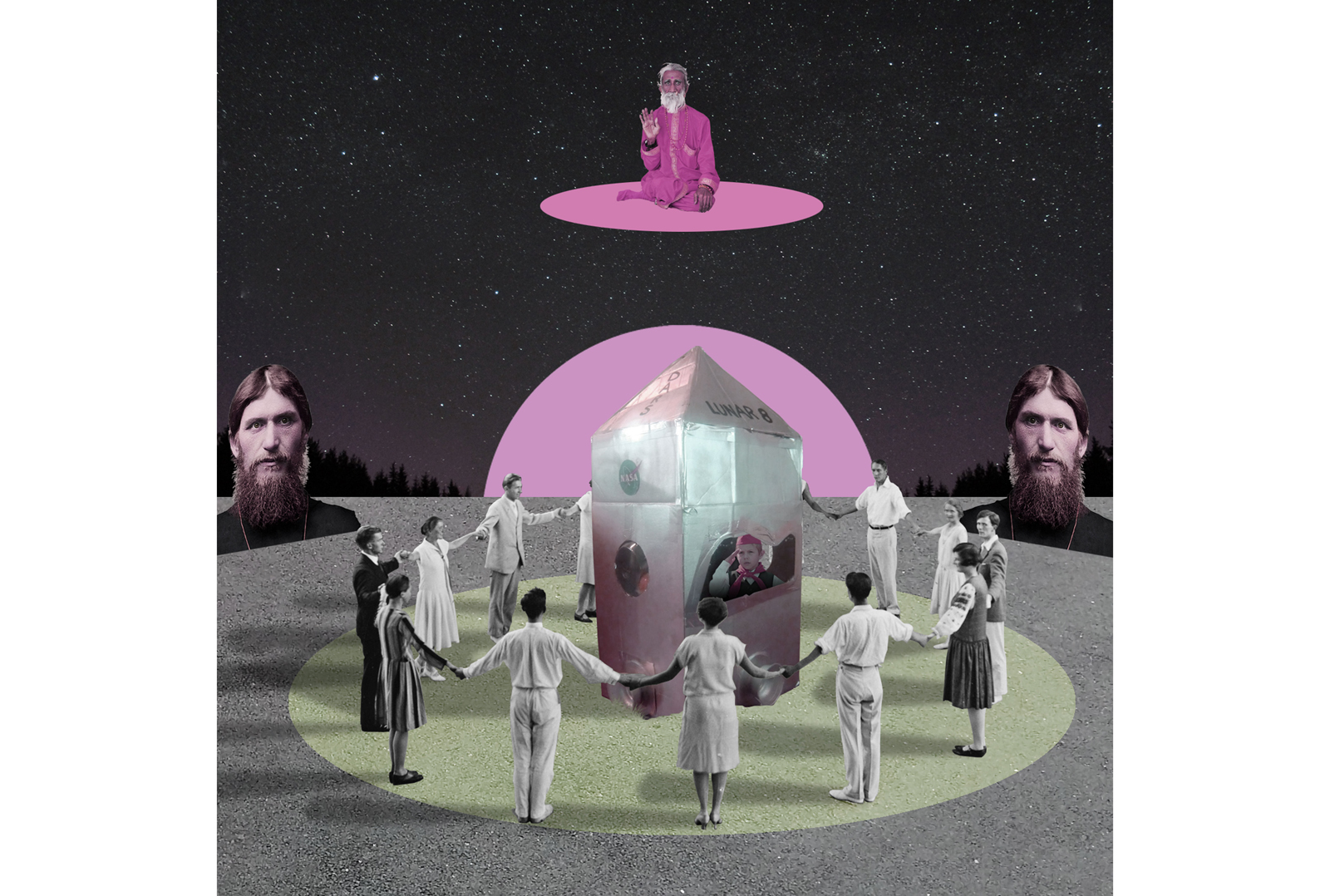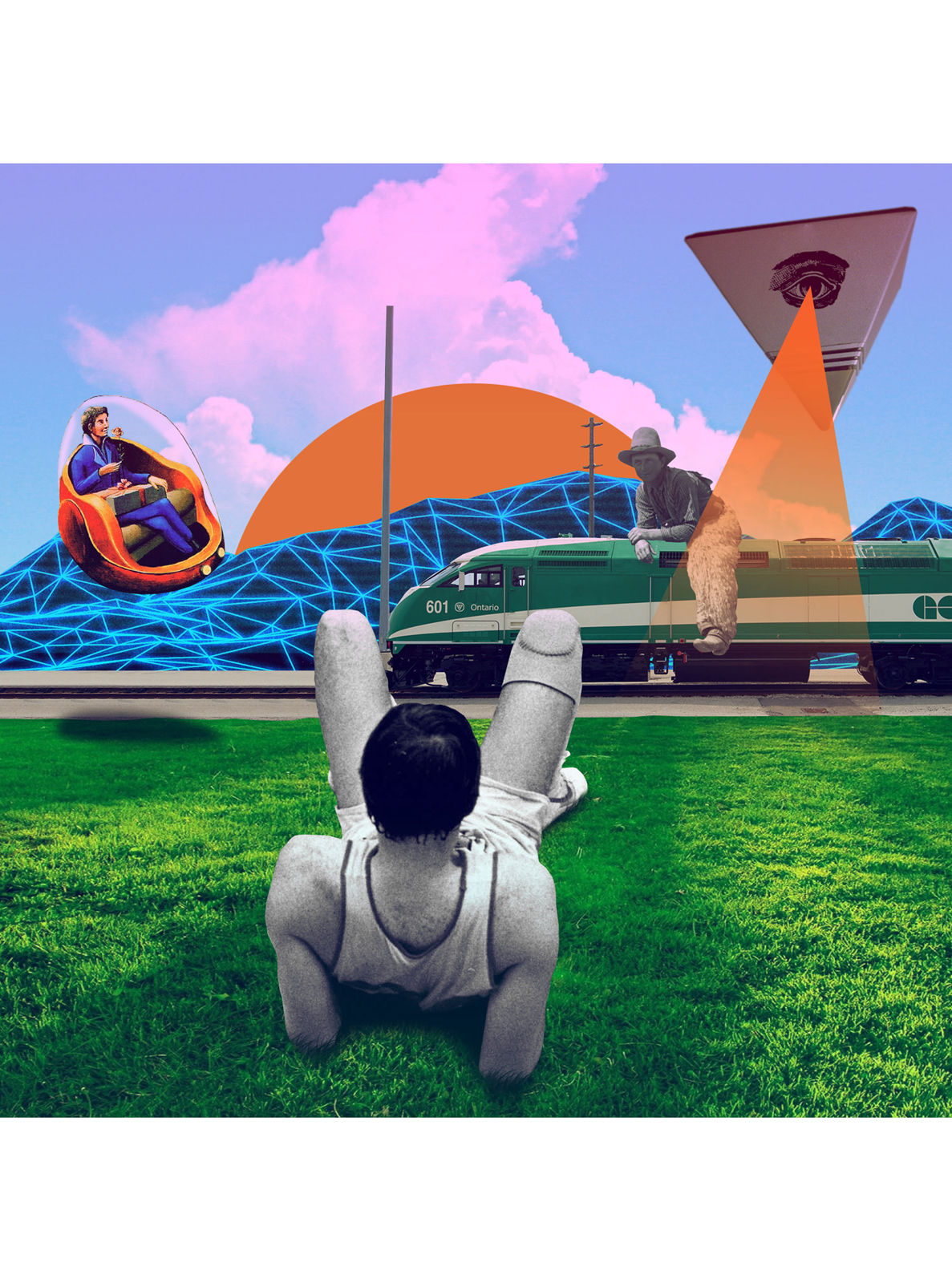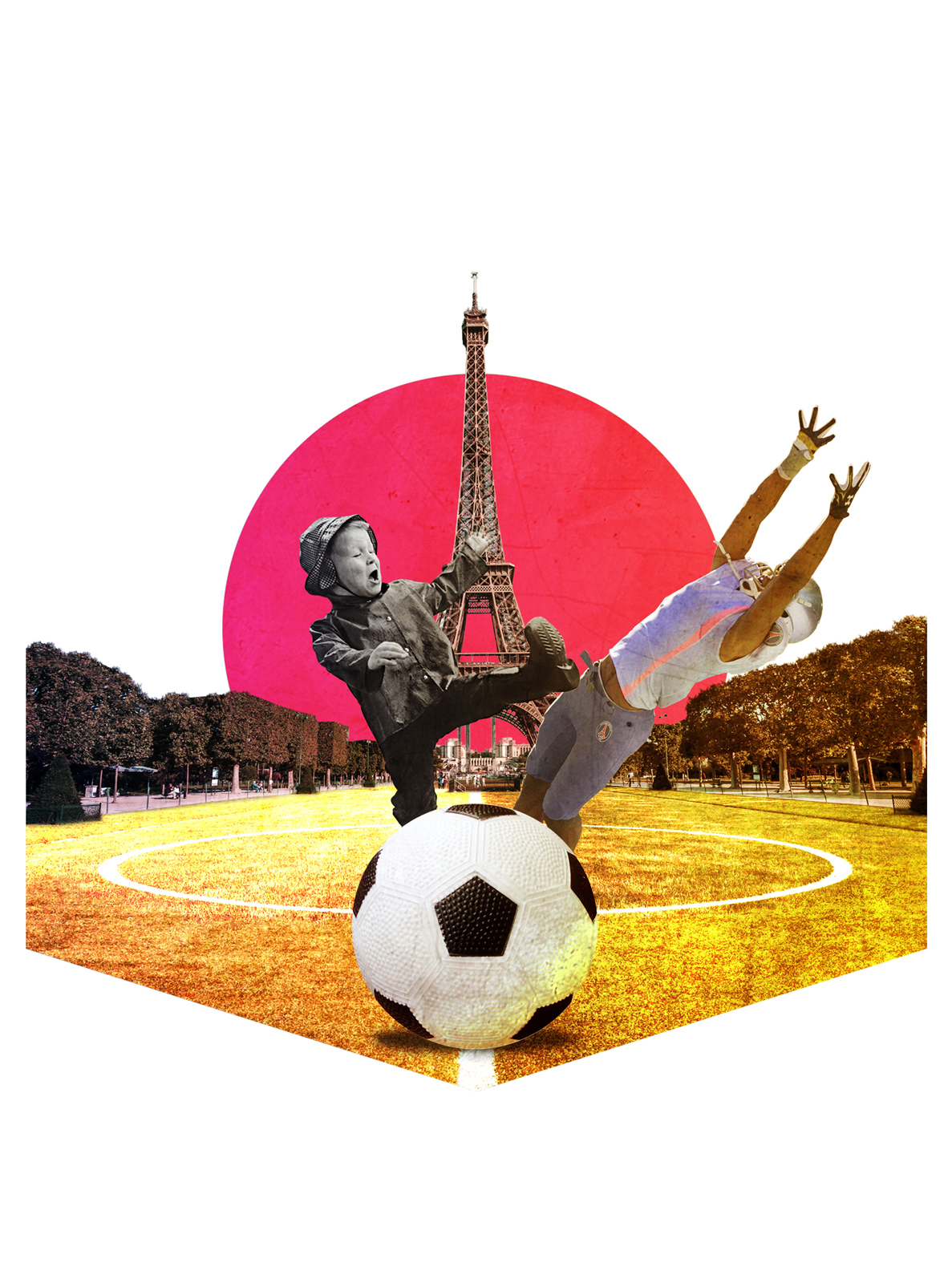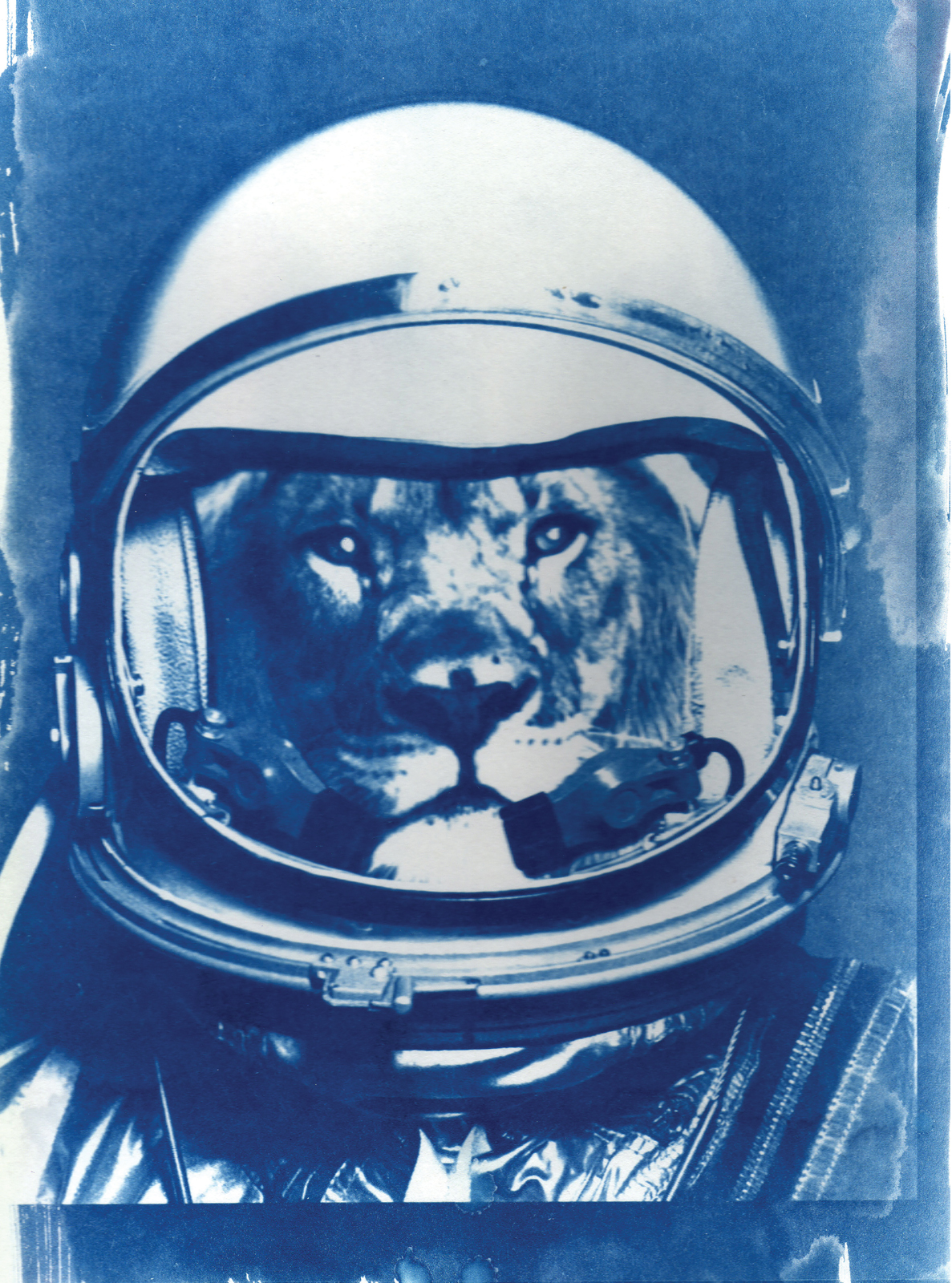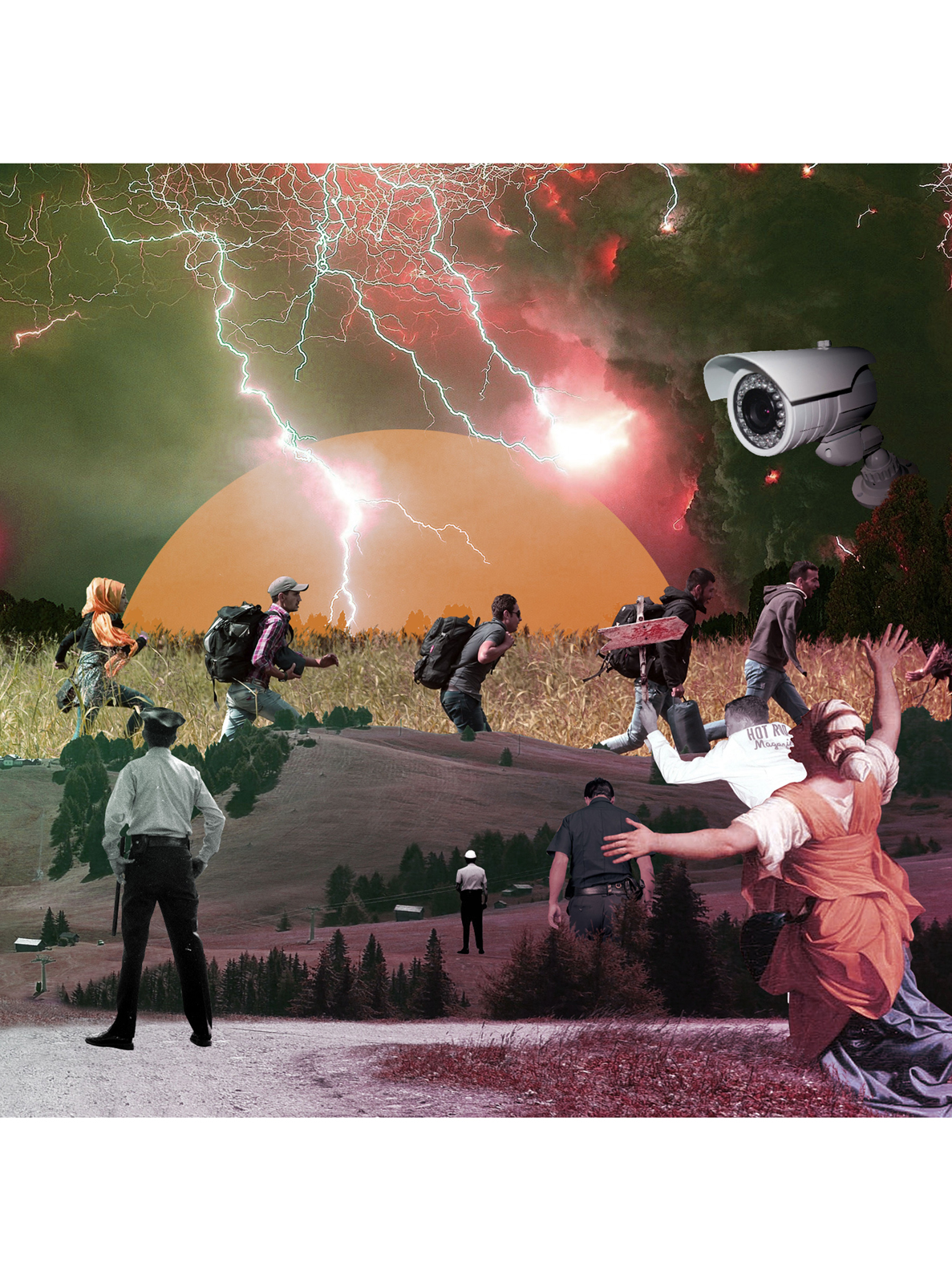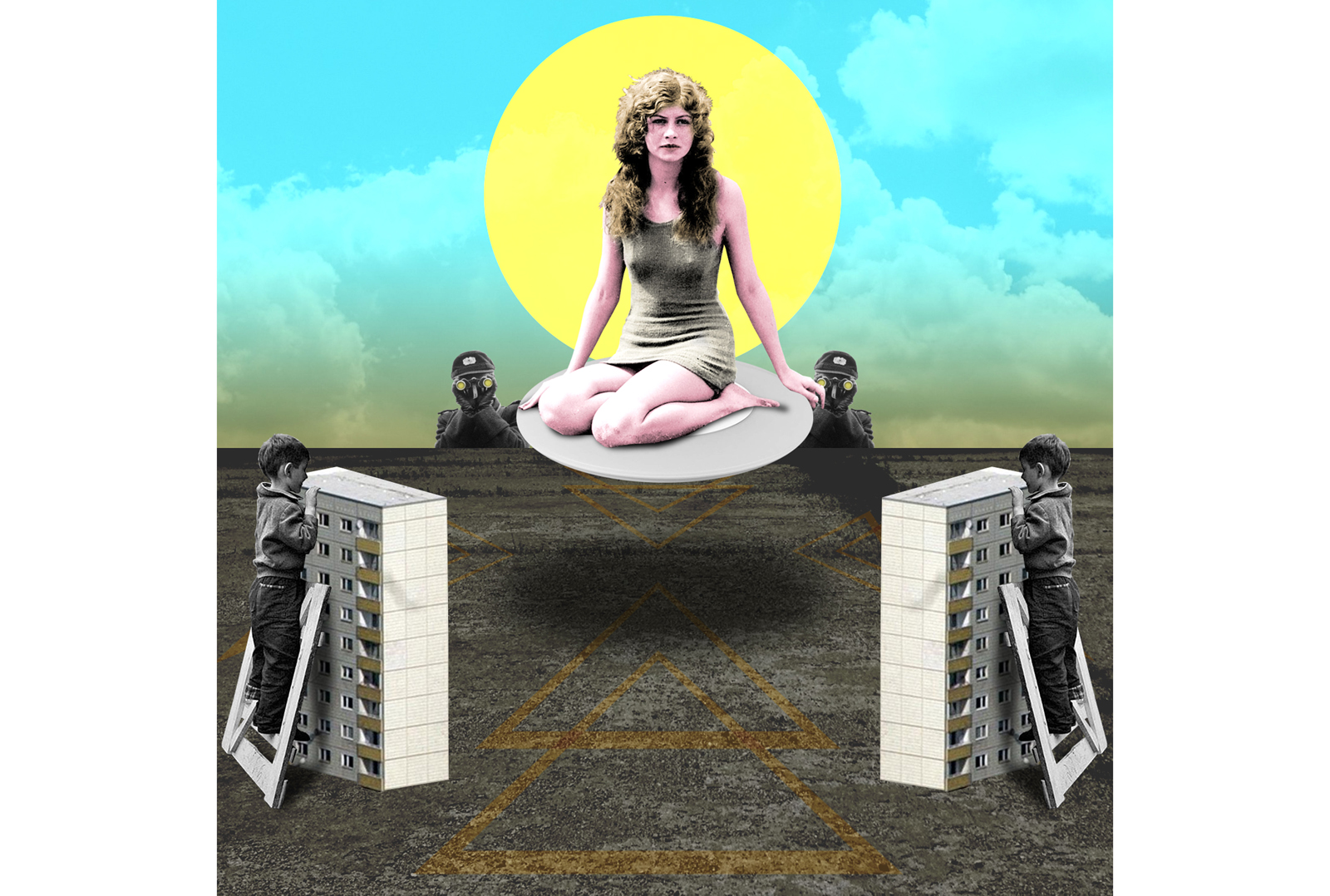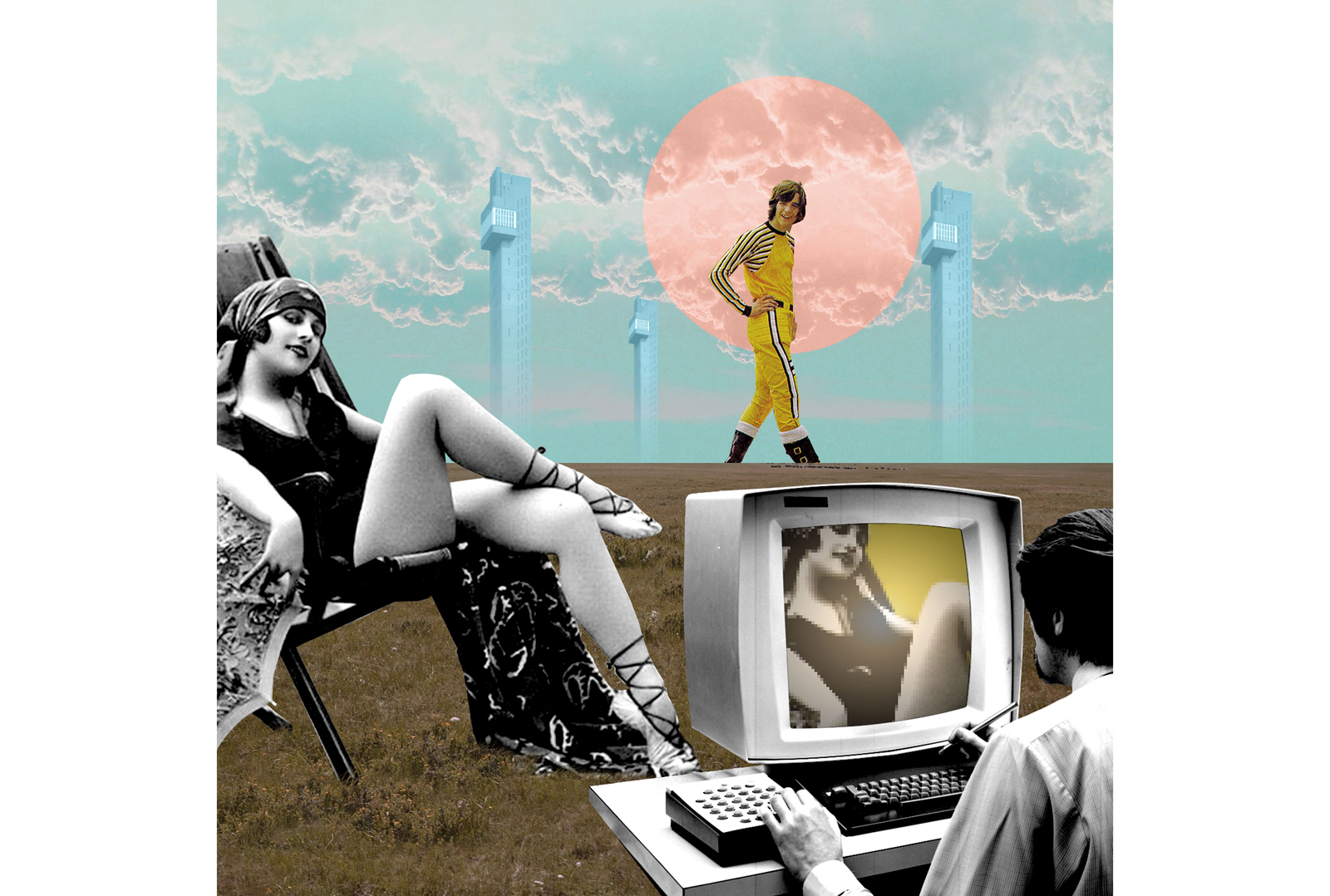SLIP - PUFF THE MAGIC PIPE WITH A SMILE
PUFF THE MAGIC PIPE WITH A SMILE
The collage works of French artist SLip offer a refreshing, tongue-in-cheek take on modernity and the “realm of the real.” For real? Meet Léon Grellutch the lion who became Belgium’s first ever Belgian astronaut, headless football heroes and Apple Jelly, the electronic band with which it all began for the mystery man known as SLip.
Dear SLip, “I Am SLip” it says on your Instagram bio. So, tell us, who is SLip?
Let your imagination work for a bit! Now, stop it and take the least sexy character you got. That should not be too far off from the old geek I am. So, yes, I’m an old French geek, creating digital collage art on my computer. I was born in the mid-1970s when the Cold War was still in its prime and when electronic music was still something only listened to by lab rats.
You are from Lyon, it also says, and you are a friend of Léon Grellutch. So, who is he?
Leon is an old friend. When I started making collages, I replaced human heads with those of animals and created stories for these characters. Leon was one of my first creations and one of my biggest successes. Leon is a Belgian lion who was chosen to be part of this cosmic journey in the mid 1980s. Unfortunately, the mission was aborted and he remained on the ground.
As a Dutchman, I have to ask: did the Belgians really try to send a lion to the moon?
I’m sorry if I hurt your national pride, but they really did in my world. Leon was the most gifted astronaut of his generation. But his life took a bad turn after the last-moment abortion of the trip. He sank into alcohol abuse and was kicked off of all other space projects.
And how does that make him an expert on Mars?
He worked a lot on space travel when he was in university.
Animals play an important role in the SLip universe. Why is that? Simply because, well, we are?
When I started making digital collages, I was afraid of using pictures of people. I did not want someone to recognize themselves. So I started to replace people’s heads. And the more I worked, the more I discovered the power of de-contextualization. I now use people in other ways and I find it more powerful. An old lady can become a dictator, an assassin, or she could come from another planet.
Do you think you want to make a statement with your work? Or, to put it in a milder way, do you want to make people think?
It would be a bit pretentious to think I could make a statement but I hope my artwork leads to a reaction with the viewer. It always deals with a subject. I cannot make things without a purpose, just for aesthetics.
Can you tell us a bit more about how you make your collages? How did it all start? How important is the use of text in your work?
I first started to develop my art with friends in an electro rock band called Apple Jelly in the late 1990s. We started from scratch and had to develop some graphical stuff. As I was the one with the most experience working with computers, I tried to create stuff. The start was not very glorious, but I worked a lot and I improved my skills day after day. I tried hard to work every day on my artwork, but in the end it was much too much to use for the band only. So, I began to work for myself. It was a whole new beginning for me, because now I had no words, no music to start with. My first challenge was to find a method to start from scratch, which still is the method I now use. First I try to catch a word, a thought, a news flash from real life, which can be something I read or something that happened in my life, and I started looking for the main picture for my illustration. When I see something related to my main idea, a small story comes to mind within a second. Then I only have to build the story with other pictures, cutting and pasting, playing with size, colors etc. etc.
I did not know Apple Jelly. But I quite liked the song Control. Can you tell us a bit about the band?
Apple Jelly was the band with which it all started. At the very beginning I was just part of the audience, watching my best friends trying to put some music on stage. Then, as the project was growing, I started to be involved, helping them with sound sessions and visual stuff. The more professional the project became, the more involved I got. After the loss of the drummer, I spent some years on stage playing with the groove machine and samplers. I made some videos too, but the video for Control was made by others – real video artists.
What would you consider your main influences? Surrealism in general, I suppose. Anything more specific?
Surrealism may seem the main influence but I feel more inspired by Soviet constructivists like El Lissitzky and the Italian futurists from the 1930’s. There are a lot of artists in the 20th century that can be considered their children. A man like Peter Saville, for example, who has made so many great works.
Football is very important to you too. But you seem to like it “headless”. Did you have a traumatic experience as a child and is this your way of revenge? Or is it just a fun way of looking at what seems to be the world’s leading religion these days?
Football has been very important to me ever since I was born and till now. Even if I don’t play any longer, due to my age, and even if I no longer go to the stadium every game, it is still a big part of my life. When I started doing my collages, it was difficult to mix art and sport. But about ten years ago a bunch of people began mixing them to reflect upon sport, and ask more philosophical questions about sport and its role in society.
It is in this period that I joined a project headed by Herbot, in which we could work and play with football players, using clichés, to create funny situations. We were invited to collaborate with SoFoot, a relative newcomer in the French press, which tries to look at football in a different way, trying to offer the reader a more political and/or cultural point of view. With this project we are able to make people laugh about football and at the same time make them think about football in a different way.
Lyon or St. Etienne?
Saint-Etienne without a doubt. Ask my friends, even those who do not follow football. I have been “green” from childhood and even if I have lived in Lyon for many years, my heart belongs to Sainté.
Do you do any commercial work?
Yes, people can contact me to ask. Last year, I did the visuals for the football film festival named La Lucarne. I also worked for an Australian brand that asked for my designs. My favorite character Leon [the lion] is also available in print on Paperwallet’s wallets, a Brooklyn-based brand. And soon, some of my designs will be on the classy bags of Le Chant du Robot, designed by a friend of mine now living in London. I always examine submitted projects. Musical projects too.
Any final words?
I'm very involved in a new project dealing with football called P2J. It’s a French weekly podcast about French and European football and their punch lines make me laugh every time. I started working with them last year and I feel I am now part of the team. We work on a lot of projects dealing with football in France and Africa. We will launch a virtual museum with paintings on football that are reviewed by me. In the future, we will try to have the project in a real life museum too. If you are interested just follow me on Facebook or Instagram.
INTERVIEWED BY PETER SPEETJENS


